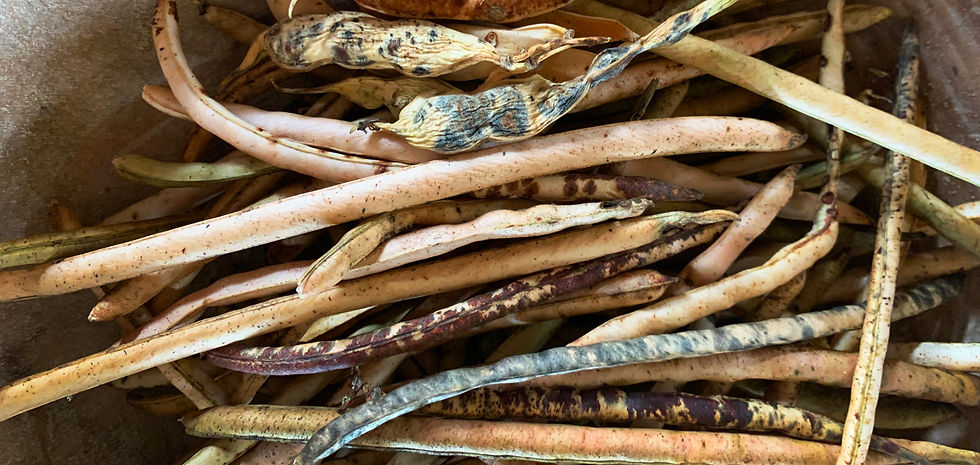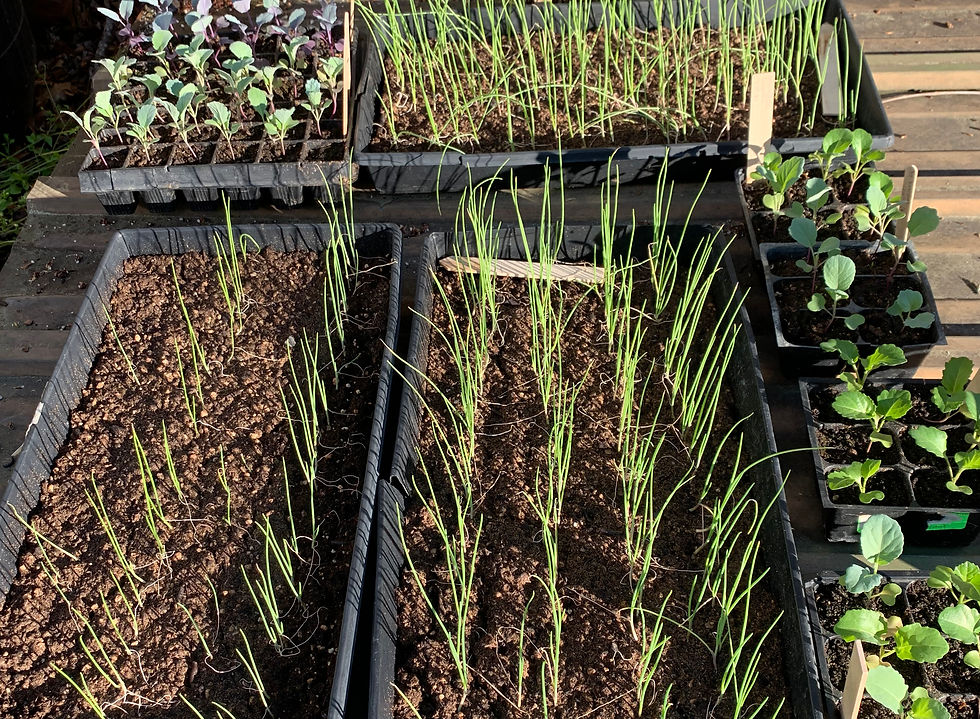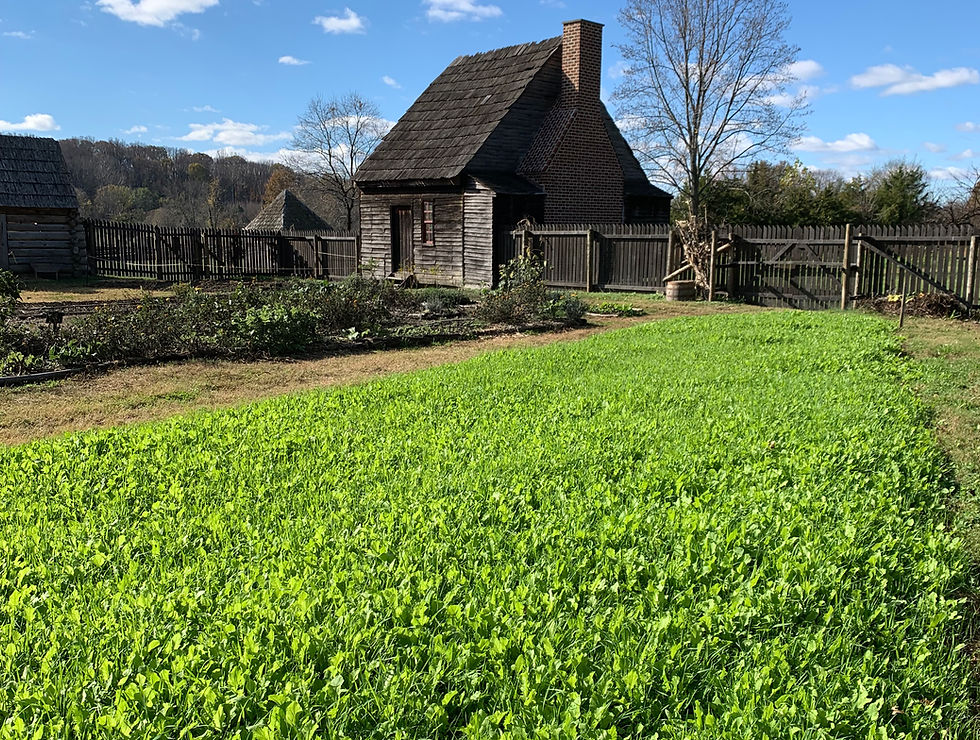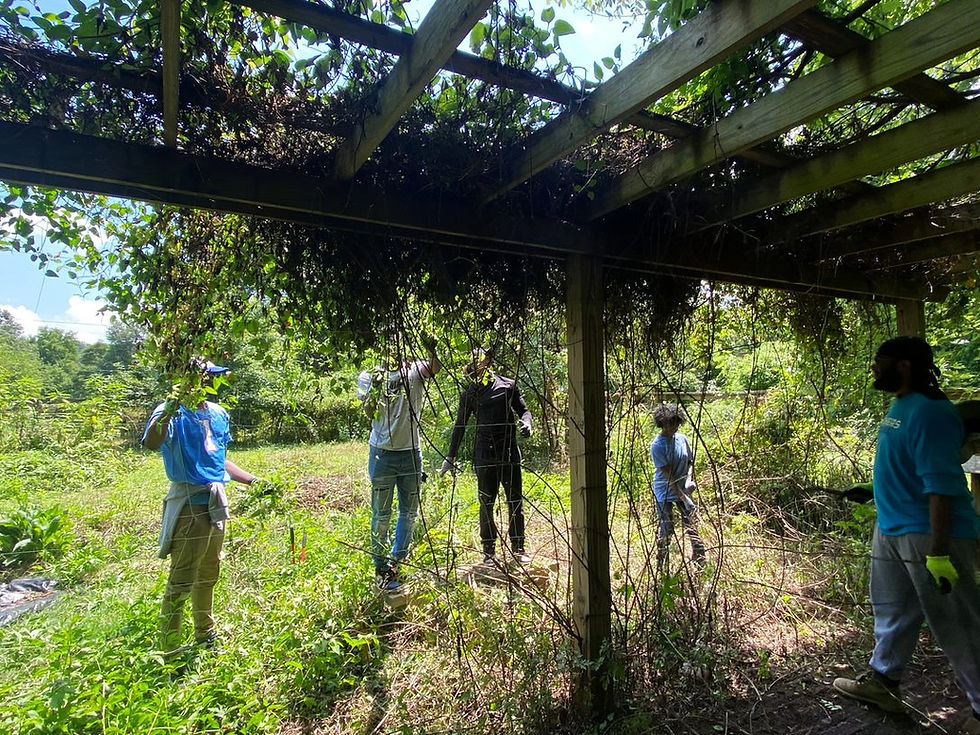March Green Thumbs Garden Blog
- Accokeek Foundation

- Mar 14, 2023
- 2 min read

The winter months are an excellent time to reflect upon the prior season’s successes and struggles in the gardens. It is a time to organize seeds, perform germination tests,
sharpen tools, and test soil health. Planning for this year’s gardens involves researching heirloom crops and native plants and sourcing reliable seeds. The Foundation's seed inventory will continue to be built upon this season as we aim to preserve genetic diversity, allowing plants to adapt to local environmental conditions.

What can you expect in the Historic Kitchen garden this spring? One of the first crops to be planted in the spring is onions, and we are growing two heirloom varieties again this year. Expect to see Red Wethersfield, whose history dates to the 1700s in New England, and the Ailsa Craig onion, which is a variety developed in the 1800s in Scotland and brought to America shortly after that. Another excellent early spring crop is cabbage, and we are growing Early Jersey Wakefield, a pointed cabbage that has a history dating back to 1840 in New Jersey.

Along with onions and cabbage, garden staff and volunteers will soon be planting heirloom varieties of lettuce, collards, kale, spinach, and peppers. You may have noticed a very green section of cover crops growing in the Kitchen Garden this winter. The purpose of the cover crops is to enhance soil health for future plantings in this section of the garden, which will include potatoes, collards, several squash varieties, and sweet potatoes. On the opposite side of the garden is a plot of Red May Wheat which will continue to grow throughout the spring. In late May or early June, the wheat will be harvested using a scythe, an agricultural tool used for hundreds of years.

In the Museum Garden, lots of work is taking place behind the scenes for the redesign of the space, which will include an array of native plants, providing nectar for pollinators and shelter and food for birds and other wildlife. Some of the native plants you will encounter include Joe Pye Weed, Beebalm, Echinacea, Liatris, Eastern Red Columbine, and Maryland’s state flower, the Black-Eyed Susan. Visitors can expect to see updates and enhancements regularly being made to the garden this spring as we practice stewardship methods that are sustainable and respectful to the Land.
Both gardens will provide many hands-on opportunities for students and youth, and volunteer positions will be available for those interested in contributing their time and skills to the garden! We look forward to creating garden spaces for everyone to enjoy - check back often to view our progress!






